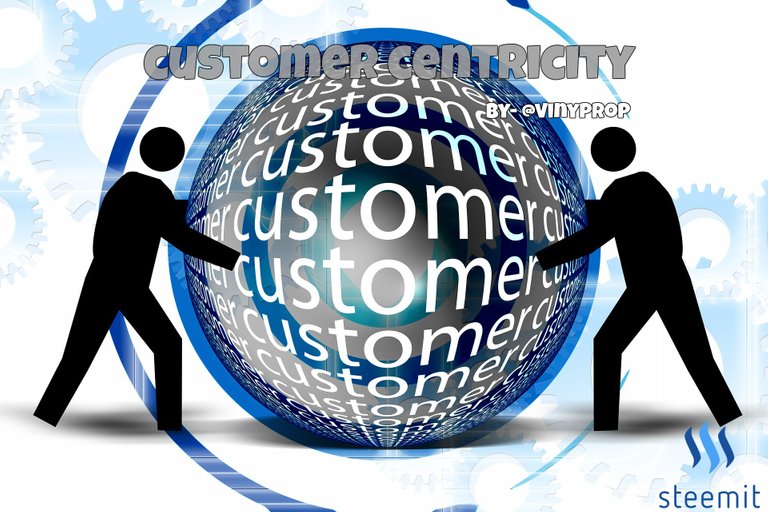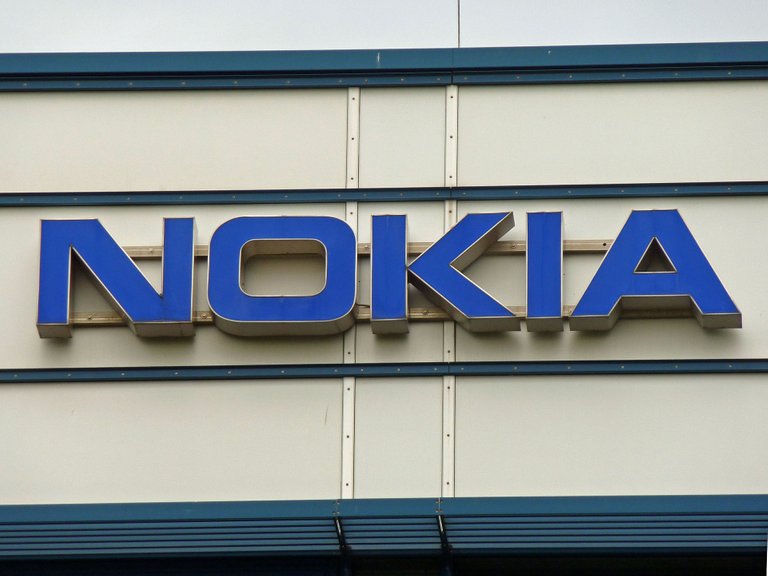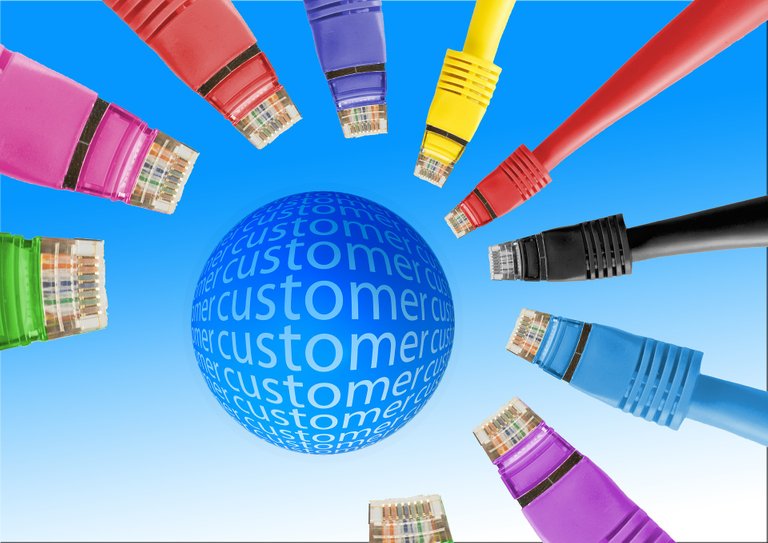Customer Centricity

Back in the days—late nineties and early two thousands—when internet was still a luxury for the rich and the elites, and the market was driven and dictated by only a few market leaders (whales or giants). That was the best time to be a huge organisation, which had deep pockets, and nil to none intent to provide and maintain an even-handed quality of services to their end customers.
The core of the problem, back then was that the customer weren’t empower and had to put up with whatever quality of service they were offered with. There was monopoly in the market and the big organisations had no real competition, which might have encouraged them to work upon improving their products and services.
Just to put things into perspective, let me throw in a real world example, which would help me consolidate my stance on the topic.
Do you know how difficult it was to get a landline connection done, in the year 1995? If you were too young to understand the difficulties, then you must talk to your parents to understand the gravity of the situation. The Telecom Industry was not as deregulated, as it is today, and as a result of which a phone connection could have been acquired only from the government subsidiaries; such as “BSNL” and “MTNL”. The waiting period for the processing of a new phone connection application was nothing less than eternity (or at least it felt that way).

Even if you somehow got lucky and managed to get the phone-line drawn and connected; as a customer you could have only hoped and prayed that the service doesn’t break down, because if it did, it would have remained in that state for a substantial amount of time, before the service provider would bother to fix it again.
Long story short, the deregulation of telecom market and the influx of new entrants into it, brought about a wave of rigorous competition along. All of a sudden, the customer became the epicentre of it all, and the whole industry started to lean towards “customer centricity”. The customer’s experience and loyalty, for an organisation, became the only bridge between an organisation’s success and failure.
Customer is god! I am sure of the fact that, you must have heard of this phrase—at least once if not more—from someone.
What do you think of the phrase? Does it really stand true, in today’s day and age? Or is it an overly exaggerating & over selling phrase?
In my opinion, we are living in the best times, till date, as customers/clients/consumers, however you want to term it. In the twenty-first century, a company must either have a customer centric philosophy or should be prepared to perish in the long run.
One of the prime examples of customer centric organisations is “Apple Inc.”. Their approach to business is built by keeping the “customer relationship” & “customer experience” at the epicenter of it all. Apple sometimes in fact incurs a small losses themselves, in order to provide the best experience to the customers, and their market dominance in the computing & consumer electronics market is a testimony to that.

Customer centricity, for an organisation, is to think like the customer and provide them of what they want, and in some genius cases (instances of Steve Jobs), give them what they want, even if they themselves don’t know what they want (where Steve Jobs invented some consumer electronics categories). Also, initially *Apple’s* design philosophy was never to create a big phone, but after seeing what their consumers wanted, they actually retracted their philosophy by taking a detour into large screen phones; in the form of “***iPhone 6 Plus***”.
Speaking of the topic, let me also show you the story from the opposite spectrum. There used to be a phone company, by the name of “Nokia”. Don’t know whether you have heard of that name before (pun intended), but they were the market leaders in the feature phones segment of Indian mobile phone arena. Then came a time when the industry actually started embracing smartphones, but Nokia being the leaders already, didn’t see any need of a change in their strategy. They continued their feature phones business and sparingly came out with a few semi-smart phones, running their “not so robust” ‘Symbian’ operating system. At a time when “Android” & “iOS” were the heartthrob of the smartphone industry, Nokia tried to sell what the customers weren’t interested in, and as registered in the history, eventually the company perished.

This was a typical example of a company’s “non-listening” nature, which resulted in a total disaster for the organisation. Later on, Nokia did realize their mistake and as we speak, they have come up with a new smart phone, running Android, hoping against the hope of taking a bite of the pie, yet again.

It has become mighty difficult for the organizations to make money by solitary selling of their goods and services to the customers. The new benchmark of profitability banks over a solid foundation built over great product & services, in conjunction with customer relationship.
Some people have even stuck their necks out to claim that Wall Street has actually started evaluating company’s values by keeping their customer relationship as one of the most important factor. This thinking is a direct result of a study which showed that the incumbent customers are always more profitable to the organisation, than the newly acquired ones. For the starters, it costs more to acquire new customers and yet they may not turn out to be a loyal customer, than the existing ones, who are much cheaper to retain (if need be to re-negotiate the terms of engagement) and will continue to be loyal with the organisation for a good time to come.
In today’s era, organisation need to be on their toes and malleable, at the same time, so that they can cater to the ever changing demands of all varieties of customers. This flexibility really helps an organisation to build a long term mutually beneficial relationship with its customers.

Another important thing that organisations need to keep on their front burner is that, they continue to learn more and more about their customers. Not only that it helps an organisation to retain the incumbent customers, but it can also aid in on boarding a plethora of new ones as well.
Some of the big firms lack customer-centricity. It’s not because they do not want operate in a customer-centric model but some factors hinder their outlook towards it. Below are a few such examples:
· The bang to buck ratio is low: Organisations do not want to invest in Customer Relationship Management (CRM) applications, if they do not have it already and believe in maintaining the status quo.
· Some organisations think that they already have a robust customer relation system, and hence do not need to put in any extra efforts to improve it.
· Some organisations try really hard to become “close to the customer” or be “customer focused”, but this nature of a firm doesn’t necessarily make it a customer centric organisation. For a company to actually be truly customer centric, it needs to be literally organize around the customers.

I would end by reiterating once again; that an organisation must align itself to be customer centric or prepare to get lost in an overly crowed market, where cut throat competition is at its peak and cheap pricing is not the only criteria to lure the customer, which has option of choosing from hundreds of vendors. In this competitive market, organisations now need a factor that can beacon out as a differential, in the eye of the customer, from the rest of the crowd. And a robust and long term customer relationship can just be that differentiating factor.

A very well articulated notion about the industry changes. So very well said about the Customer being the high priority business driver. And in complete agreement with you on that. Thank you @vinyprop for such a substantial, informative article.
Thank you @vidyabanjan for your kind words and continuous support. Means a lot. :)
Congratulations! This post has been upvoted from the communal account, @minnowsupport, by vinyprop from the Minnow Support Project. It's a witness project run by aggroed, ausbitbank, teamsteem, theprophet0, someguy123, neoxian, followbtcnews/crimsonclad, and netuoso. The goal is to help Steemit grow by supporting Minnows and creating a social network. Please find us in the Peace, Abundance, and Liberty Network (PALnet) Discord Channel. It's a completely public and open space to all members of the Steemit community who voluntarily choose to be there.
Thanks for sharing us.i hope you successful man.
I need your help.
This post has received a 0.78 % upvote from @drotto thanks to: @banjo.
Nice post